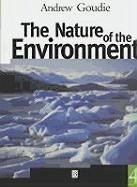
The Nature of the Environment

PAYBACK Punkte
86 °P sammeln!
The fourth edition of this highly acclaimed text provides an up-dated examination of the natural environment of the earth at various levels, from the global to the local. Integrating the study of geomorphology, climatology, hydrology, pedology and biogeography, it considers the ways in which we both mould and are moulded by our landscape and environment. The book also presents an historical perspective, and investigates natural climatic changes, hazardous events and human impacts. This new edition follows the same successful framework of earlier editions, with extra material, including an extr...
The fourth edition of this highly acclaimed text provides an up-dated examination of the natural environment of the earth at various levels, from the global to the local. Integrating the study of geomorphology, climatology, hydrology, pedology and biogeography, it considers the ways in which we both mould and are moulded by our landscape and environment. The book also presents an historical perspective, and investigates natural climatic changes, hazardous events and human impacts. This new edition follows the same successful framework of earlier editions, with extra material, including an extra chapter on The Organic World. In addition, a list of key concepts has been added at the end of each chapter and the book now also includes points for review. With substantially more "windows", updated and expanded guides to reading, new plates, diagrams, and tables, and up-to-date examples and case studies, this fourth edition of Nature of the Environment will be welcomed by students and teachers alike. Please visit the accompanying website at: http: //www.blackwellpublishers.co.uk/goudie to view sample material from both the new edition and forthcoming instructor's manual online.


